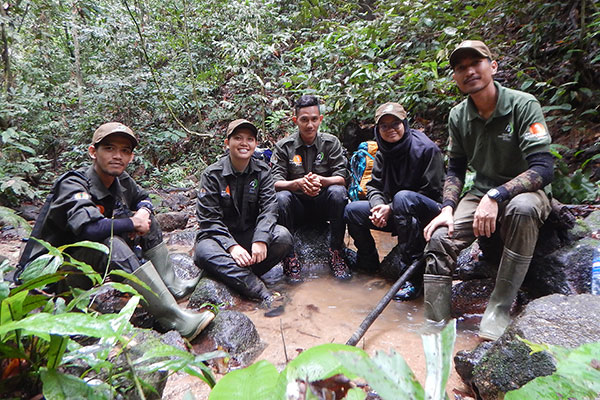Read the second part of our in-depth profile of a wildlife ranger team. Last month we left them racing towards a trapped elephant, unsure what they'd find when they arrived. What condition will the elephant be in? Will they be able to save it, or will the team be confronted with another distressing elephant death? Read below to find out what happened next...
2pm
We finally reach the site, having walked up and down slippery muddy hills for two hours without rest. The elephant is a young female about two years old. Her left foreleg is entangled in a rope snare. Our team leader discusses with the BKSDA, who tell us that the snare has cut through the skin and into the layer of flesh underneath, but we won’t know how bad it is until we remove the snare and the vets check the wound.
2.30pm
Three of our team scout around the area and find a group of four elephants less than a kilometre away, most likely part of the herd that this young elephant belongs to. If she’d stayed ensnared for much longer, they might have moved away, but it’s a good sign that they’re still here. We hope she’ll be able to rejoin them again soon.
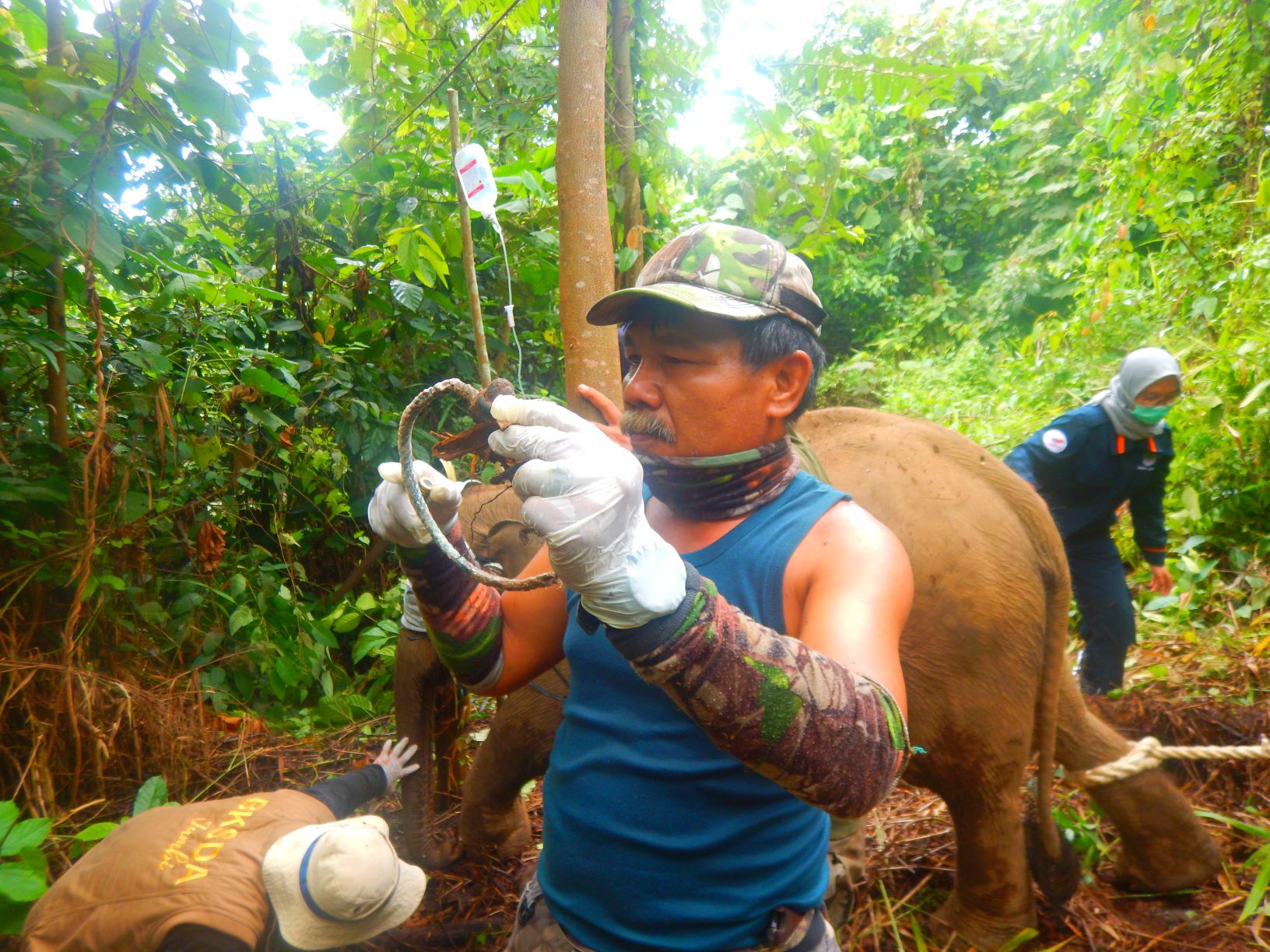
Above: The rope snare that our rangers and the BKSDA removed from the young elephant's leg
4pm
Along with the BKSDA and their veterinarians, we work together to tranquilise the small elephant so she doesn’t struggle. Our team leader cuts the snare so it is no longer pulling on the elephant’s leg. We carefully remove the rope from the wounded leg and the vets step in to inspect the wound.
We all breathe a sigh of relief when the vets tell us that, although the rope has cut into the flesh, it’s not too deep. The elephant will be able to recover fully, although that may take a couple of weeks. The vets clean the wound, apply anaesthetic and antibiotics to the wound - it stains the skin and flesh blue. They also take blood by inserting a needle into one of the large veins in the elephant’s ear and collect faeces to carry out other health checks. The medical checks will help them treat the elephant for other diseases to help her recover more quickly.
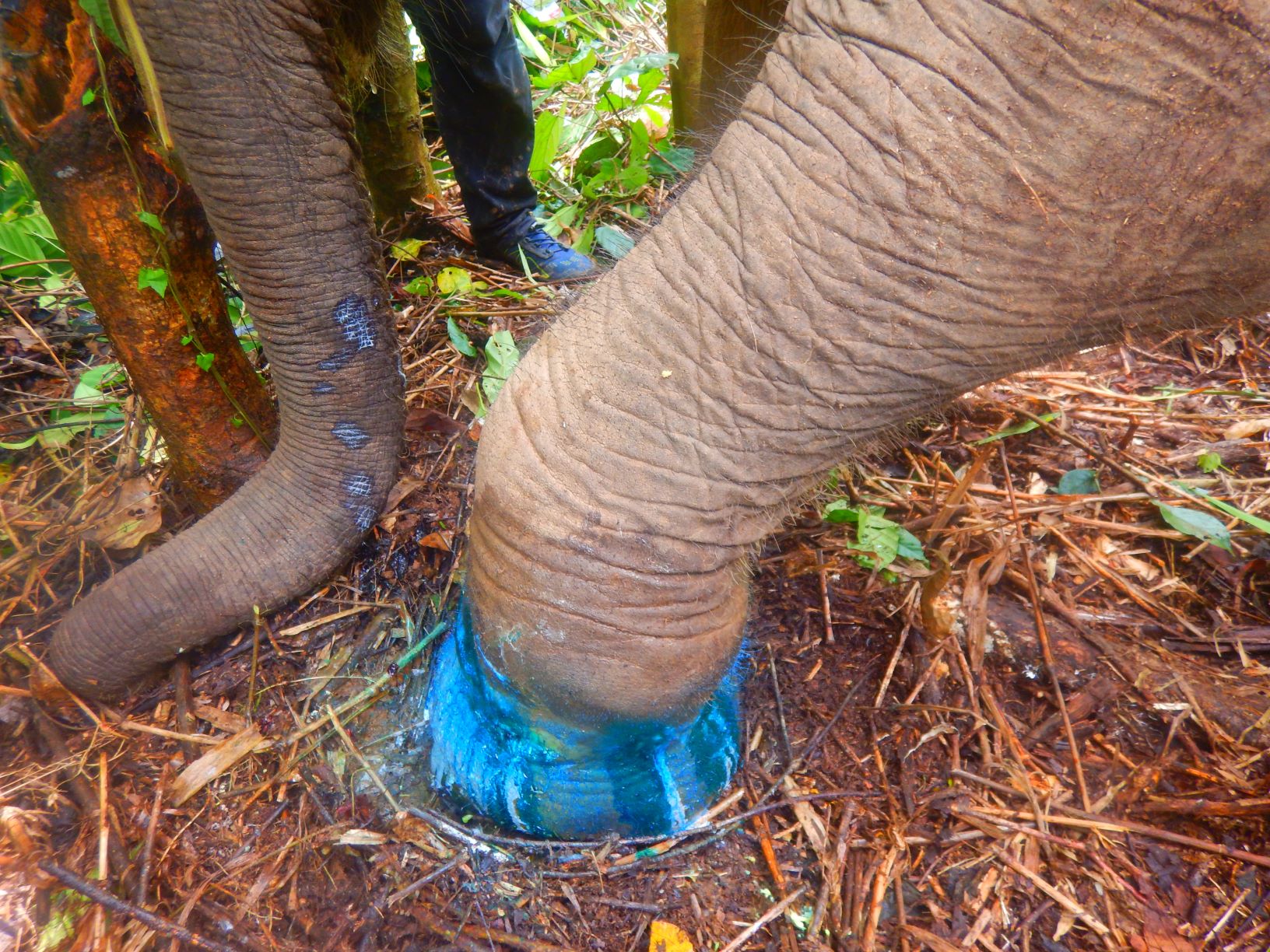
5pm
The elephant starts to wake up from the anaesthetic, at first groggily moving her trunk and back legs. We’re all carefully watching the way the elephant uses her injured leg. Can she step fully on it yet? Can she walk easily through the dense undergrowth? The injured leg is weaker than the other three, but she's able to move a little through the forest, which is a good sign. However, she's not able to move far, so we'll need to stay and monitor her until she's able to rejoin her herd.
However, it’s clear the elephant will die if left on her own right now. The Wildlife Ambulance vets discuss with the BKSDA and our team leader about how to care for the elephant. We could transport her to an elphant sanctuary for recovery, or we could care for her here in the jungle, monitoring her recovery and bringing food into the forest for her to eat. The best option is always to leave an animal in the wild, as it has the greatest chance of survival.
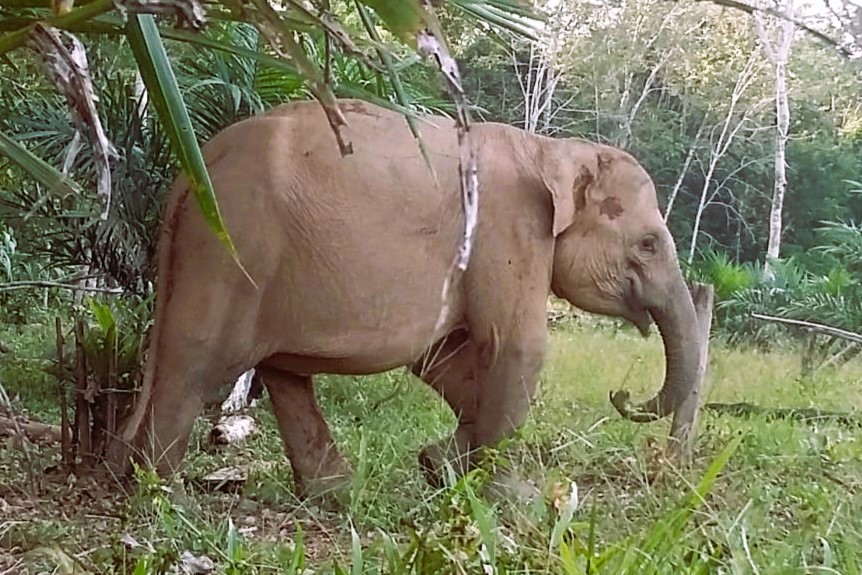
Above: The young elephant a few days later, still tentative with her left front leg
6pm
We start to set up a camp near the young elephant. The vet will care for the elephant’s medical needs, provide medication, continue to assess the wound, and dress it with more antibiotics over the next week. Two of our team members will stay with the vet and provide for her other needs, including monitoring the herd that’s still nearby. We’ll gather leaves and branches for the elephant to eat and bring water buckets for it to drink from.
Meanwhile, two of our team will go to the closest village to buy food such as pineapples for the elephant to keep her fed during her recovery time. The other two team members will go to the local villagers, along with the BKSDA, to meet with and thank the people who raised the alarm. They’ll also hand out more information about snares, the dangers to wildlife, and the ways they can help protect elephants.
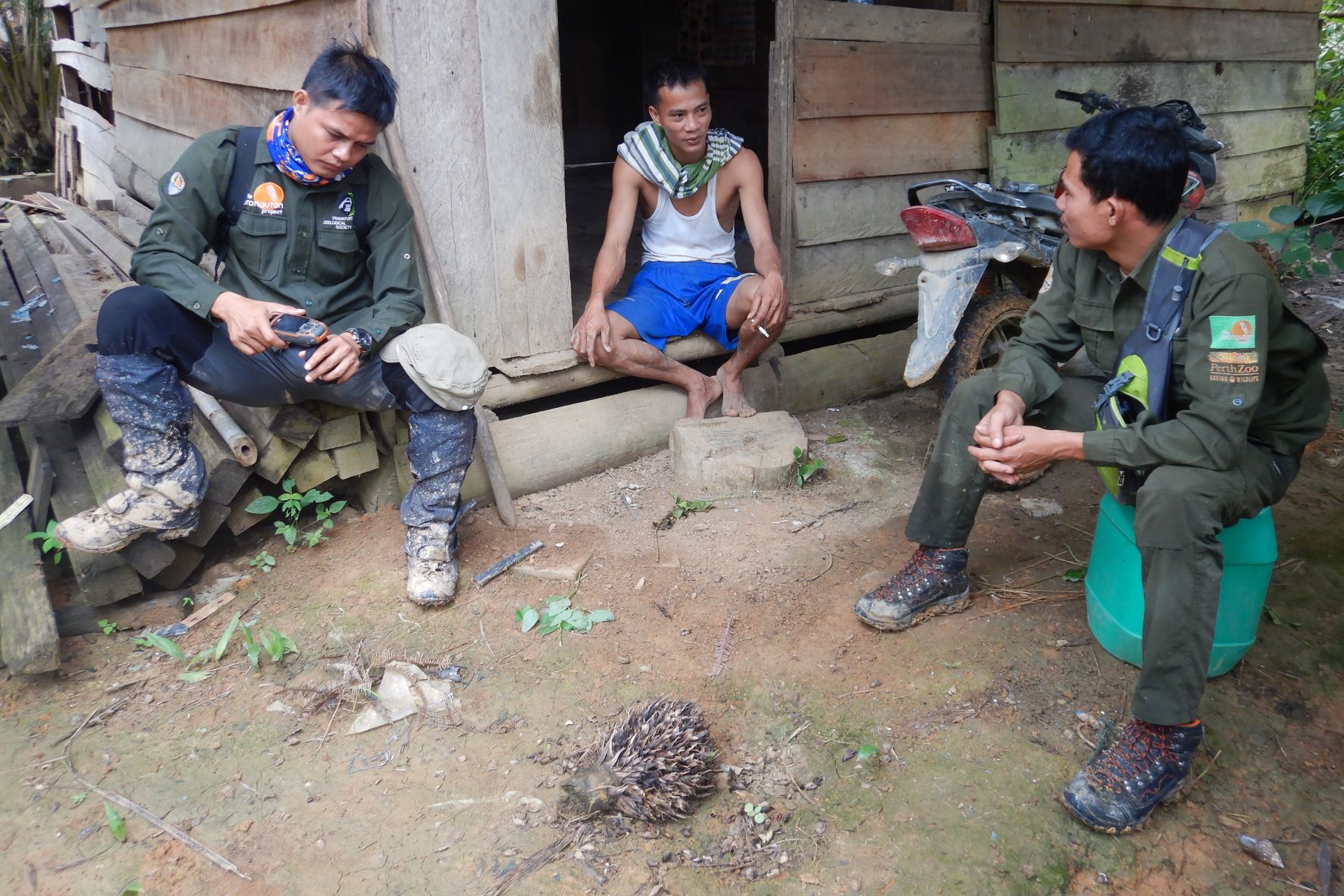
Above: Our rangers meeting with a local farmer to discuss the importance of wildlife conservation and sharing ways that we can support farmers to protect their crops from elephants
7pm
Those of us who remain in the forest for the next week finally settle down for some food and rest. We take a dip in the river to cool down and wash off the mud and sweat of the day. We boil water for drinking, set a fire to cook our dinner, and set up our tents.
8pm
Over dinner, we discuss the day. It’s been a hard day, traversing a river, racing through the midday heat to reach an ensnared elephant, and then the efforts of freeing the infant from the snare. But it’s been an incredibly satisfying and successful day. Tomorrow we will continue to remove more snares, track the elephants we are monitoring, and educate and engage with more villagers and farmers so that together we can all work to protect and save Sumatran elephants.
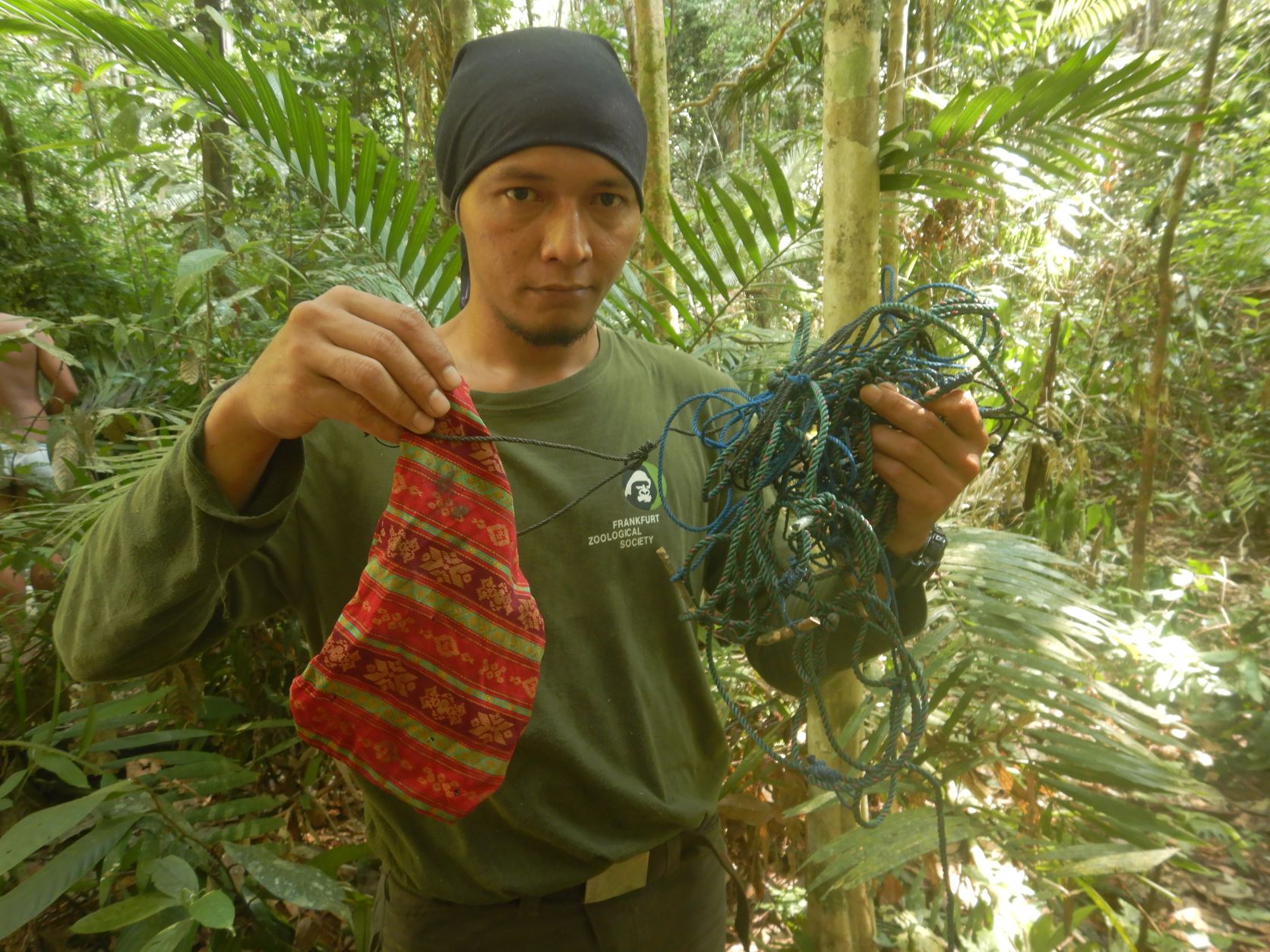
Above: A wildlife ranger with a number of snares as well as a small pouch to catch songbirds for sale in the wild bird markets
We’ve saved a young female elephant from certain death, and we hope that in the future she’ll have babies of her own, and help build her species up from the low numbers they are now. We’ve also learned that although some members of the nearby communities are still setting snares, many are concerned about the health and wellbeing of wildlife like elephants.
9pm
We go to sleep with the sounds of the forest all around us. The tinkling of the nearby river, the insects humming, and the trees sighing in the breeze.
Our work is never really finished, but we can go to sleep tonight knowing we’ve made a huge difference - and we’ll do it all again tomorrow. Every single elephant life saved is another chance for this precious species to survive beyond tomorrow.
